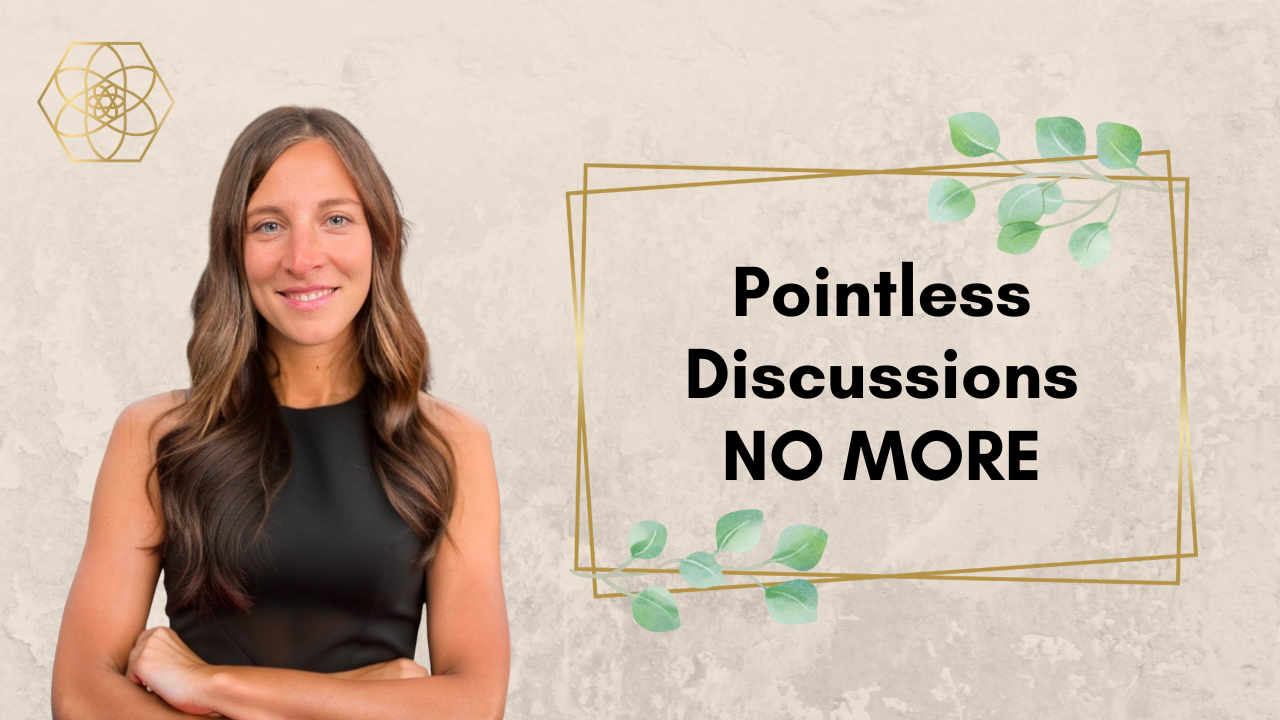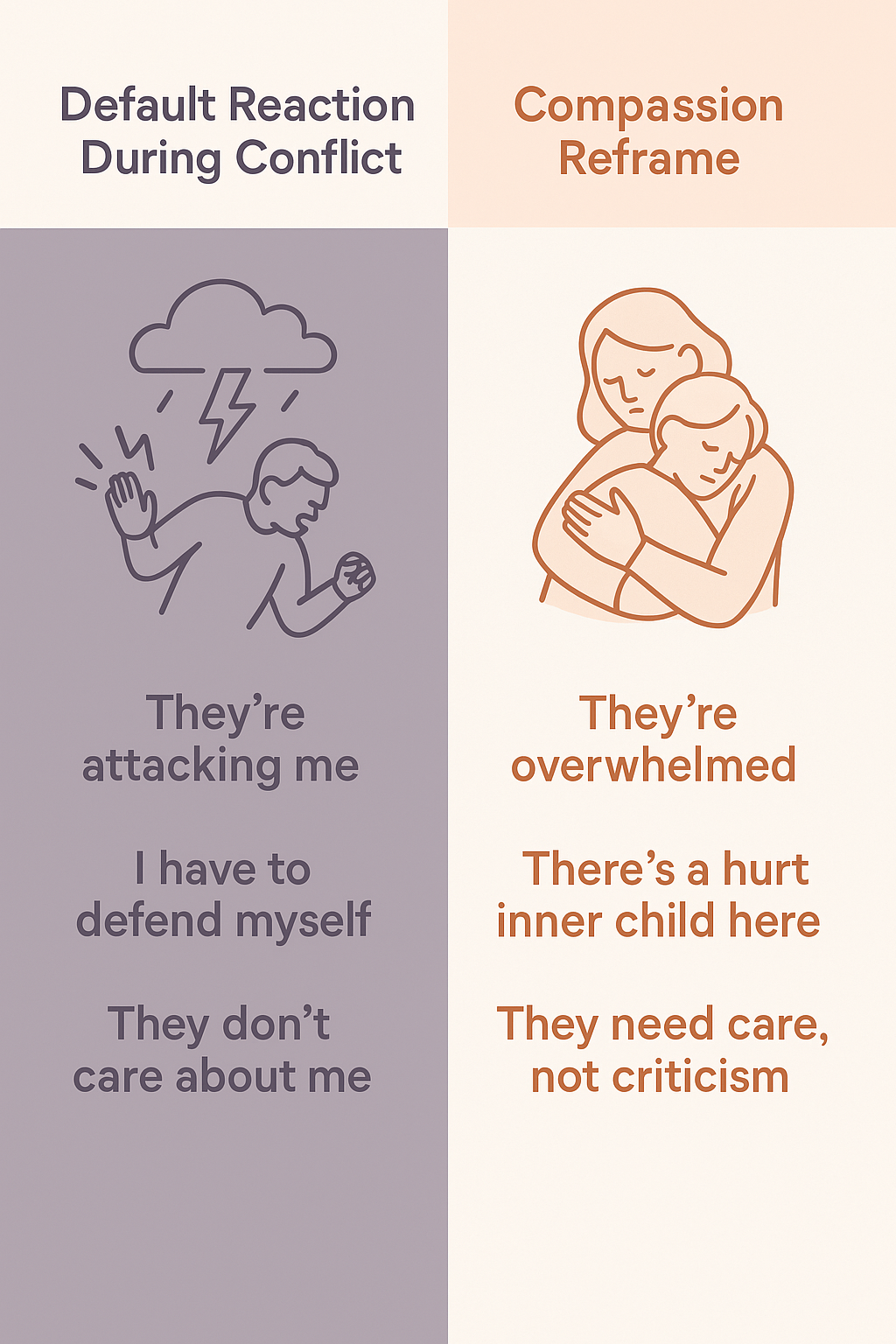Emotional Safety: The Foundation Of Every Deep, Lasting Relationship
Emotional Safety: The Hidden Key to Connection
Imagine a relationship where conflict and outside problems are nothing to worry about.
✨ When there is a disagreement, you talk it out.
✨ When there is stress, you stick together.
✨ When someone makes a mistake, you find a solution.
This is the power of emotional safety.
It's not just a nice-to-have in conscious relationships; it's the foundation so that deep connection can develop.
Yet, many people I know have literally NEVER experienced what emotional safety feels like.
Growing up, I didn’t know that it existed.
In childhood I needed to constantly guard myself from either emotionally cold or emotionally out of control adults.
Looking back, most of the time I felt on edge and hyper vigilant to potential emotional attack.
Sounds familiar?
My husband Matt and I 💗
Only since I’m with my husband Matt I’ve discovered what it feels like when problems and emotionality don’t endanger the relationship.
With him I know we always find a solution – even when things are tough and we both get triggered.
What a relief!
But how did we arrive at this place in our relationship?
It wasn’t luck and it didn’t just happen …
So let’s take a look how we did it!
What Is Emotional Safety
In psychological terms, emotional safety is the felt sense that your thoughts, feelings, and needs will be met with empathy, not judgment.
It’s the foundation of secure attachment—where both partners feel safe to express vulnerability without fear of rejection, criticism, or emotional retaliation.
Emotional safety allows the nervous system to relax, making real connection, intimacy, and growth possible.
“Emotional safety is the felt sense that your thoughts, feelings, and needs will be met with empathy, not judgment.”
Emotional Safety Means That Conflict Doesn’t Destroy Connection
And because your thoughts, feeling and needs will be met with empathy, there is almost no breeding ground for harsh and violent conflicts.
So, emotional safety doesn’t mean there’s never conflict or that your partner will never say things that are hurtful.
But when emotional safety is present, conflict doesn’t destroy connection!
The reason why this is so crucial is because in unhealthy relationships one of the main reasons why people are so unhappy is because they constantly feel like a small conflict could erase the whole relationship.
That is a very unsafe place to be.
You’re constantly on edge, waiting for the next shoe to drop.
So, if instead you know that both of you have really good conflict resolution skills and also that your partner places your wellbeing over “winning” an argument, you’re going to feel a whole lot safer in the relationship.
And that’s the place when we can really open up, show our vulnerabilities and develop deep, fulfilling connection in our partnership.
And that’s exactly what happened in my marriage.
My partner and I are 8 years together and this is what our typical day looks like: we laugh, we kiss, we hold each other – feeling more in love every day.
I know it sounds cheesy but it’s the truth!
And it’s also no coincidence - it’s a logical consequence of both of us feeling really, really safe with each other because we’ve developed emotional safety in our relationship.
So let’s look at how you can too:
How We Built Emotional Safety (and You Can Too)
So now that we’ve established what emotional safety is, let’s look into how to my husband and I created it:
1. We stopped trying to “win.”
For a long time, both of us had a habit of arguing to prove a point.
Guess what? Even if one of us “won,” we both lost.
What actually helped?
Learning to shift from “Who’s right?” to “What’s really going on here?”
We started asking better questions:
What vulnerable emotion (anxiety, hurt, shame) are we both feeling underneath this?
What do we actually need right now from each other (a hug, understanding, some kind words)?
Can we slow this down instead of escalating?
📝 Try this instead of reacting:
“I notice I feel _______. I think what I really need right now is _______.”
(It sounds simple. It’s not easy. But it works.)
🔹 Real-Life Scenario: The “Dishwasher Disagreement”
It starts with something small—Julian forgets to load the dishwasher again.
Mara snaps, “Seriously? You always leave this for me!”
Julian feels attacked and shoots back, “You’re always nagging. I was going to do it later!”
They both start raising their voices. It’s not about dishes anymore. It’s about respect. Being heard. Feeling seen.
But then Julian catches himself. He pauses, takes a breath, and says:
“Wait… I think I’m feeling ashamed. Like I failed again. And I hate that feeling.”
Mara exhales. Her face softens.
“Yeah. I think I just felt overwhelmed. Like I’m doing everything alone.”
Suddenly, they’re not fighting to be right—they’re getting real.
Julian puts his hand on hers:
“Okay. Let’s figure this out together.”
That moment? That’s emotional safety.
That’s what happens when we stop trying to win, and start trying to understand.
🎥 Watch: How to End the Cycle of Endless Arguments That Lead to Nothing
In this video, I walk you through what’s really going on underneath those circular fights that go nowhere. Spoiler: it's rarely about the topic itself. It’s about the emotional trigger behind it—and when you learn how to name and soothe that, you stop the loop before it starts.
2. We learned how to repair (quickly).
One of our rules? We don’t leave emotional ruptures hanging.
That doesn’t mean resolving everything in the moment.
It means coming back when things cool down and saying, “Hey, that didn’t feel good. Can we talk about it?”
And here’s the big one:
We learned to apologize without justifying ourselves.
(That was a game-changer!)
🔹 Real-Life Scenario: The Missed Call Accountability
Maya’s had a rough day. She texts Sam in the afternoon:
“Hey, could you call me later? I just really need to hear your voice.”
Sam sees it, thinks “I’ll do it after this meeting,” and then… completely forgets.
That night, Maya feels a lump in her throat. She doesn’t want to seem “needy,” but she also doesn’t want to swallow her hurt.
So she says gently:
“When you didn’t call, I felt really alone. I know it might not seem like a big thing, but my day was just so intense and I always feel better when I speak to you.”
Sam pauses and feels shame rising.
He wants to say: “Come on Maya, you know how much my boss is putting on me at the moment” but instead he pauses.
And looks at Maya, sees his beautiful girlfriend who just had a hard day.
His heart is sinking a little—not with shame, but with care.
And then he says: “You're right. I said I would call, and I didn’t. I’m sorry. I really want to show up better for you.”
Maya exhales. Her body relaxes.
“Thanks for hearing me. That means a lot.”
They hug. Nothing dramatic—just a simple, clean repair.
No defensiveness. No guilt spirals. Just connection restored.
That’s how emotional safety is built: one honest moment at a time.
3. We learned to see the human behind the trigger
When we’re triggered, it’s so easy to see the other person as a threat — as someone big, powerful, and mean who’s here to hurt us.
But that’s almost never the real story.
What really changed things for us was learning to pause in those moments of conflict and remember:
This is someone I love… and right now, they’re scared, overwhelmed, or hurting.
Instead of attacking back or shutting down, we started asking:
✨ What might be going on underneath this reaction?
✨ Is there a vulnerable emotion (hurt inner child) that needs care—not correction?
When we can see each other like that, even in hard moments, the fight starts to soften.
We stop battling and start understanding.
We move from blame to curiosity.
That’s how emotional safety grows—not by avoiding conflict, but by staying connected to your partner’s vulnerability.
📝 Try this mental reframe during conflict:
“This isn’t my enemy. This is someone I love, having a hard time.”
🔹 Real-Life Scenario: “You never listen to me!”
During a late-night conversation, Mia turns to her partner and snaps, “You never listen to me!”
Her voice is sharp. Her eyes are fiery.
Her partner, Jake, feels his chest tighten—his gut reaction is to defend himself.
But then he pauses. He remembers what they’ve been practicing.
Instead of firing back, he says softly, “I’m here. What’s going on underneath that?”
“Instead of firing back, he says softly, “I’m here. What’s going on underneath that?”
Mia’s face shifts. The tension in her shoulders softens just a little.
“I guess I just feel invisible sometimes,” she admits. “Like what I say doesn’t matter.”
Now they’re not arguing anymore. They’re connecting.
That one moment of recognition turned a potential blow-up into an opening for closeness.
And that’s the power of emotional safety.
What If Emotional Safety Was The Foundation Of Your Relationship?
Imagine a relationship where arguments don’t spiral for days, because both of you know how to come back and repair.
Where you don’t have to keep walking on eggshells, overexplaining, or hiding parts of yourself just to keep the peace.
Where emotional safety is the norm, not the exception.
This is possible.
Not because you’re with “the perfect person” but because you build it together—on purpose.
It starts with small, brave choices:
✨ Saying “that hurt” instead of shutting down.
✨ Reaching for understanding instead of trying to be right.
✨ Looking beneath the trigger to see the truth of what your partner is feeling.
These moments are the bricks that build a safe, solid foundation for love.
And if you want support creating that kind of relationship—or healing one that feels stuck or disconnected—I’m here to help.
🌱 Click here to learn about working with me 1:1
Your relationship deserves more than just “getting by.”
It can be the safest, most freeing, most connected place in your life.
And I’d love to help you get there. 💛











